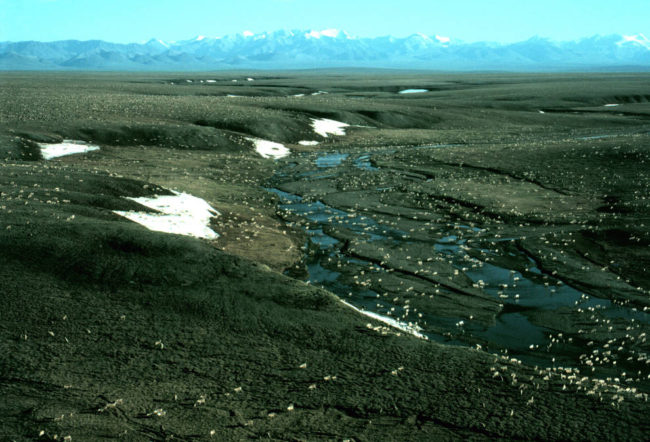
Today, the Trump administration took the first official step towards allowing oil drilling in the Arctic National Wildlife Refuge.
The Department of Interior released a notice saying it will hold “no fewer than two” oil lease sales in a 1.6-million-acre portion of the refuge, known as the 1002 area or the Coastal Plain. It adds those lease sales must be held by December 2024.
The announcement, while expected, was immediately celebrated by Alaska’s political leaders and condemned by environmental groups.
“We welcome this scoping announcement and the Department’s continued work to implement our legislation opening the Coastal Plain to responsible energy development,” Sens. Lisa Murkowski and Dan Sullivan and Rep. Don Young said in a joint statement.
“In its rush to drill America’s Last Frontier, the Trump Administration is trying to sell leases in the iconic Coastal Plain of the Arctic National Wildlife Refuge as fast as they can, with no regard for why the refuge was created in the first place,” Geoffrey Haskett, president of the National Wildlife Refuge Association, said in a statement. “This race to drill flies in the face of the Arctic refuge’s true purposes such as conserving natural diversity and shows the disdain this administration has for the natural world.”
The notice kicks off the first public comment period on drilling in the refuge.
“This scoping process begins the first step in developing a responsible path forward,” Assistant Secretary of the Interior for Land and Minerals Management Joe Balash said in a statement. “I look forward to personally visiting the communities most affected by this process and hearing their concerns.”
Interior said it will hold public meetings in Anchorage, Arctic Village, Fairbanks, Kaktovik and Utqiaġvik. It did not announce any meeting locations outside Alaska, although it said meetings could be held in other places “if there is strong community interest.”
Kara Moriarty, president of the Alaska Oil and Gas Association, said she thinks limiting the public meetings to Alaska is a good idea.
“I’m encouraged that the Department of Interior is not having a scoping meeting in D.C., and they’re not having a scoping meeting in California or Washington or other areas of the country that they’re sole mission in life is to keep our resources locked in the ground,” Moriarty said.
Moriarty said that’s because much of the opposition to drilling in ANWR comes from the Lower 48, while many Alaskans support it.
But Bernadette Demientieff, executive director of the Gwich’in Steering Committee, said she thinks the number of Alaskans who don’t want oil development in the refuge is growing.
The Coastal Plain “has been protected so long that people just thought it would never open,” Demientieff said. “But now that it is, I have faith that many Alaska Natives are going to stand up against it.”
The public now has until June 19 to submit comments to the Bureau of Land Management. Interior will announce the times and locations of the public meetings in late May.
Elizabeth Harball is a reporter with Alaska's Energy Desk, covering Alaska’s oil and gas industry and environmental policy. She is a contributor to the Energy Desk’s Midnight Oil podcast series. Before moving to Alaska in 2016, Harball worked at E&E News in Washington, D.C., where she covered federal and state climate change policy. Originally from Kalispell, Montana, Harball is a graduate of Columbia University Graduate School of Journalism.




